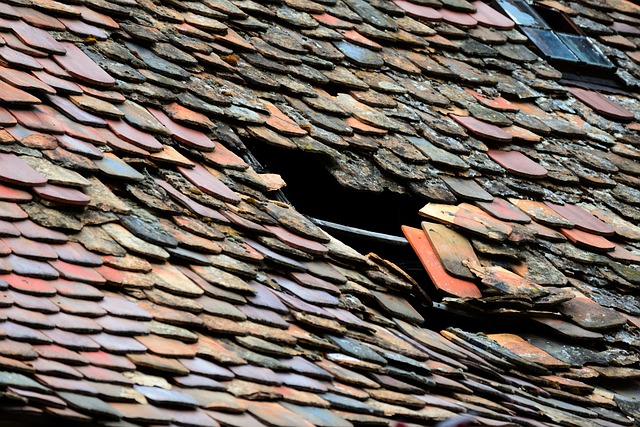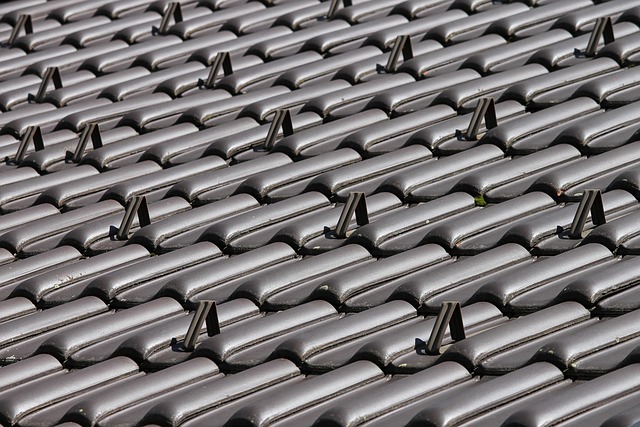Built-up roofing near me is a durable and cost-effective choice for commercial flat roofs, featuring multiple layers of flexible membranes, fabric plies, and gravel for enhanced protection against extreme weather and moisture. Installation requires meticulous preparation and skilled professionals, while regular maintenance is crucial to extend its lifespan. Turn to local experts when replacing your built-up roofing system for reliable, long-lasting solutions.
Built-up roofing systems are a popular choice for flat commercial buildings, offering durability and cost-effectiveness. This comprehensive guide delves into the multi-layered complexity of these roofs, exploring common materials, installation processes, and benefits. We break down the challenges and provide essential maintenance tips to ensure longevity. Additionally, we help you find local experts specializing in built-up roofing near you for prompt replacement services.
- Understanding Built-Up Roofing Layers
- Common Materials in Commercial Systems
- Installation Process: Step-by-Step Guide
- Benefits and Challenges of Built-Up Roofs
- Maintenance Tips for Longevity
- Finding Local Experts for Replacement
Understanding Built-Up Roofing Layers

Built-up roofing is a common and reliable choice for flat commercial roofs across the country, with numerous layers forming a strong, durable surface. This multi-ply roof system starts with a base layer typically consisting of a bitumen roofing membrane—a flexible, waterproof material that acts as a shield against the elements. On top of this initial layer, additional plies are added, each separated by a layer of gravel or other aggregate. The combination creates a robust structure that can withstand extreme weather conditions and provide many years of protection for the building below.
Each layer plays a crucial role in the system’s performance. The bitumen membrane offers excellent adhesion to ensure all layers bond securely, while the gravel roof provides added weight and acts as a protective barrier against UV rays and mechanical damage. This multi-layered design is a go-to solution for many commercial properties, offering both durability and cost-effectiveness for those seeking built-up roofing near me.
Common Materials in Commercial Systems

Built-up roofing systems, a popular choice for flat commercial buildings, rely on several key materials to provide durability and protection. These systems typically consist of multiple layers, each serving a specific function. The foundation is usually a layer of heavy-duty felt or synthetic underlayment that acts as a barrier against moisture and provides a smooth surface for the subsequent layers.
Above this, builders often apply a thin layer of bitumen roofing, a type of asphalt, which binds the individual components together. This is followed by several plies of reinforced fabric, typically made from polyester or glass fibers, enhancing structural integrity. The topmost layer usually involves a gravel roof, providing additional protection against UV rays and offering a reflective surface that aids in energy efficiency. Such multi-ply roofs are known for their longevity and ability to withstand extreme weather conditions, making them a reliable option for commercial properties, especially when searching for built-up roofing near me.
Installation Process: Step-by-Step Guide

The installation process for built-up roofing systems, often sought after by those searching for built-up roofing near me, involves several meticulous steps. It begins with preparing the roof deck, ensuring it’s clean, dry, and free from any debris. A base layer of bitumen roofing is then applied, serving as a protective barrier against moisture and UV rays. This is followed by alternating layers of bitumen and reinforcement fabrics, creating a multi-ply roof structure. Each layer is meticulously lapped over the previous one to maintain integrity and prevent leaks. After the final layer is secured, a gravel roof is uniformly spread across the top, offering additional protection and a sleek finish. The entire process demands precision and expertise to ensure the longevity and reliability of the roofing system.
Benefits and Challenges of Built-Up Roofs

Built-up roofs, often referred to as built-up roofing near me, offer several advantages for flat commercial buildings. This multi-layered system comprises alternating layers of bitumen and reinforcing fabrics, topped with a gravel or other protective surface. One of its key benefits is durability; these roofs can withstand harsh weather conditions and last for several decades with proper maintenance. They are also highly effective at protecting the building below from extreme temperatures, offering excellent insulation properties. Additionally, built-up roofing is relatively affordable and accessible, making it a popular choice for many commercial properties.
Despite their advantages, there are challenges associated with built-up roofing. The installation process can be intricate and requires skilled professionals to ensure each layer is properly applied and sealed. Over time, these roofs may require more frequent maintenance, especially in regions with extreme weather patterns, as the bitumen can degrade, leading to leaks. Moreover, while they provide good insulation, built-up roofs may not be the most energy-efficient option compared to modern alternatives, like cool roofs or green roofing systems. However, with regular care and the right specifications for local climates, bitumen roofing or multi-ply roofs can remain reliable and protective structures.
Maintenance Tips for Longevity

Maintaining a multi-layered built-up roofing system—a common sight in commercial buildings across the country—is paramount to ensuring longevity and performance, especially for those seeking reliable built-up roofing near me. Regular inspections are crucial; look out for signs of damage, such as cracks or missing components. Repairs should be addressed promptly to prevent further deterioration. One effective strategy is to implement a yearly maintenance plan, including cleaning the roof surface to eliminate debris that could hinder drainage and lead to water damage.
For built-up roofing systems, it’s essential to keep an eye on the underlying layers, particularly the bitumen roofing, as it plays a vital role in sealing and protecting the structure below. Additionally, applying a fresh layer of gravel roof or multi-ply roof can enhance durability and weather resistance. Remember, proactive care will not only extend the life of these complex systems but also ensure optimal performance and curb appeal for commercial buildings.
Finding Local Experts for Replacement

When it comes to replacing your built-up roofing system, especially on a commercial building, finding local experts is crucial. Start by searching for “built-up roofing near me” to uncover a network of professionals who specialize in this area. These experts will have the knowledge and experience required to handle complex multi-ply roofs, which are often found on flat surfaces.
Local roofers who focus on bitumen roofing or gravel roofs can provide tailored solutions. They understand the unique challenges of these structures, from the proper installation techniques to maintenance over time. Don’t underestimate the value of a nearby team; they can offer quick response times and efficient service, ensuring your commercial building remains protected with a robust, long-lasting roof.
